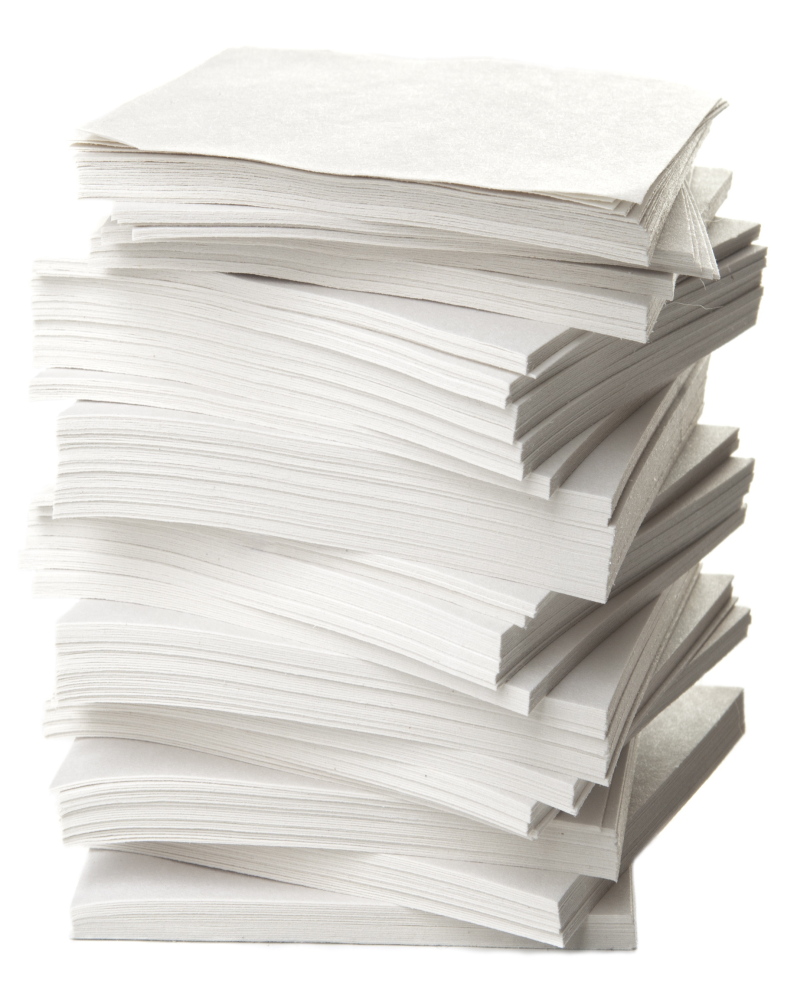Remember the paperless office? It was first forecast some 40 years ago, but based on white paper use in my own office (and the last one, and the one before that – all in the field of publishing), we’ve a ways to go. An informal survey of friends in fields from architecture to retail to law, revealed a lot of variance. One reported a filing cabinet that is “40 percent empty,” another an “uphill battle” against the hard paper forms required for just about everything by the city of New York – her employer. But if your office isn’t ready or able to go entirely paper-less, it can at least use less paper.
About two weeks ago, copies sent to the printer at my office suddenly went from single to double-sided paper. In a matter of 20 minutes, according to Portland Press Herald chief information officer Stewart Wright, the IT department switched the default setting on the computers of almost every employee. “It was a pretty quick fix in order for us to save some money and at the same time reducing our footprint even in a small way,” Wright said. “It’s a win-win, as far as I’m concerned.”
Using double-sided paper typically cuts back on paper use by 40 percent, “which is quite a lot,” said Susan Kinsella, executive director at Conservatree, a San Francisco nonprofit that promotes sustainability and the environmental use of paper. (Not 50 percent, as you might think, because sometimes you print an odd number of pages.) In her experience, more businesses are using double-sided paper than in the past, although “I don’t think it’s the majority yet and it should be,” she added. Many government procurement contracts now require that new computers and copiers have double-sided printing set as the default, she said. Kinsella speculated that some Mainers, given the paper industry here, might “encourage you to use as much as paper as possible. But with Maine’s beautiful forests, it’s really important that we conserve resources as much as we can. We need to look at the long term, not only the short term. Conserving the forests will let them extend for a lot longer.”
The figure that’s generally cited is that it takes 24 trees to make one ton of paper, but paper use has implications beyond forest preservation (think about the environmental costs of producing and transporting paper). Businesses struggling to figure out the best way to conserve paper can find many answers on the comprehensive website of the Environmental Paper Network, which states, “By using less paper, increasing recycled content, and making other improvements, you can save wood, water and energy, and cut pollution and solid waste.” The organization’s paper calculator helps businesses find the most eco-friendly choice.
Send questions/comments to the editors.




Success. Please wait for the page to reload. If the page does not reload within 5 seconds, please refresh the page.
Enter your email and password to access comments.
Hi, to comment on stories you must . This profile is in addition to your subscription and website login.
Already have a commenting profile? .
Invalid username/password.
Please check your email to confirm and complete your registration.
Only subscribers are eligible to post comments. Please subscribe or login first for digital access. Here’s why.
Use the form below to reset your password. When you've submitted your account email, we will send an email with a reset code.